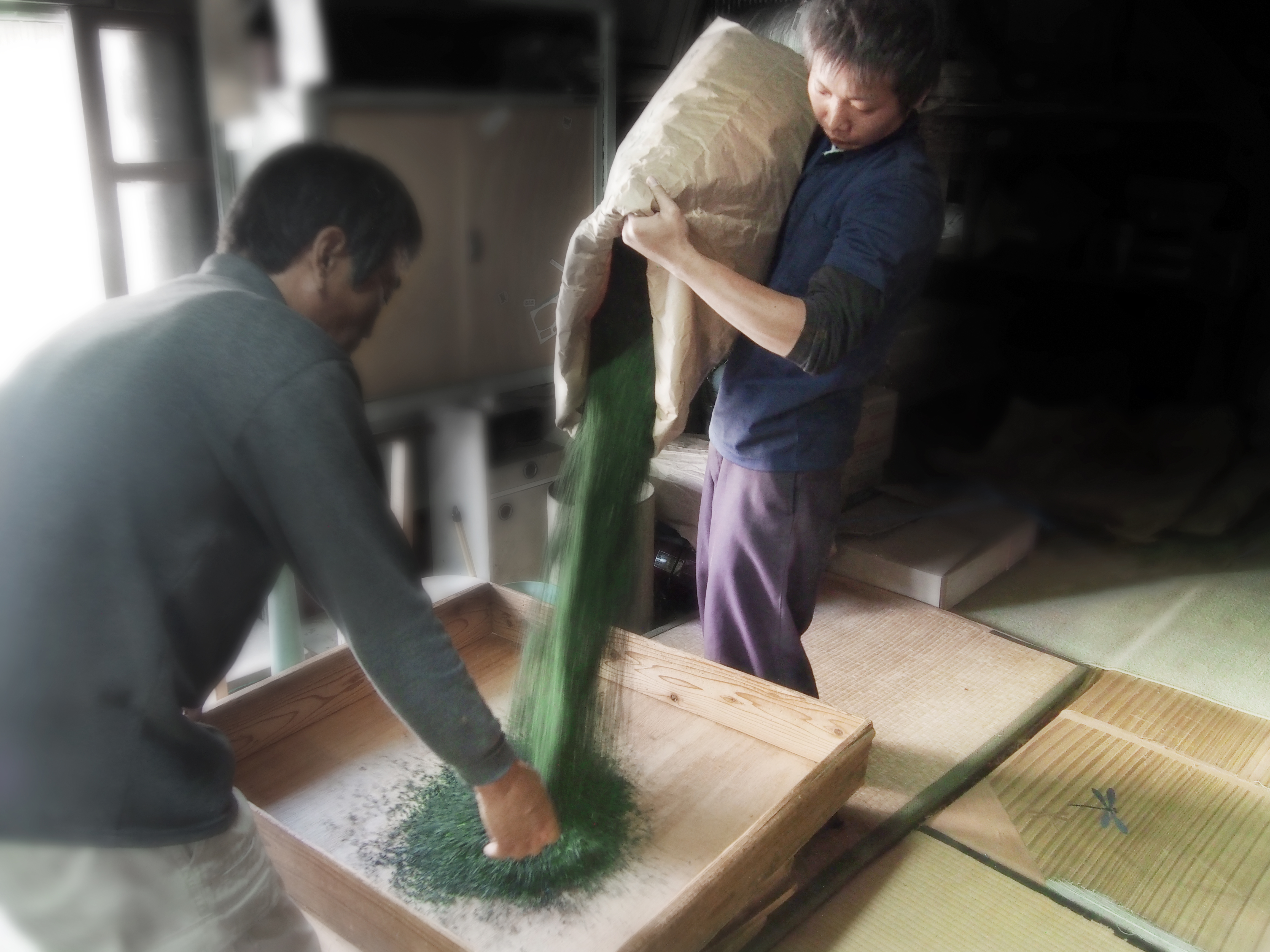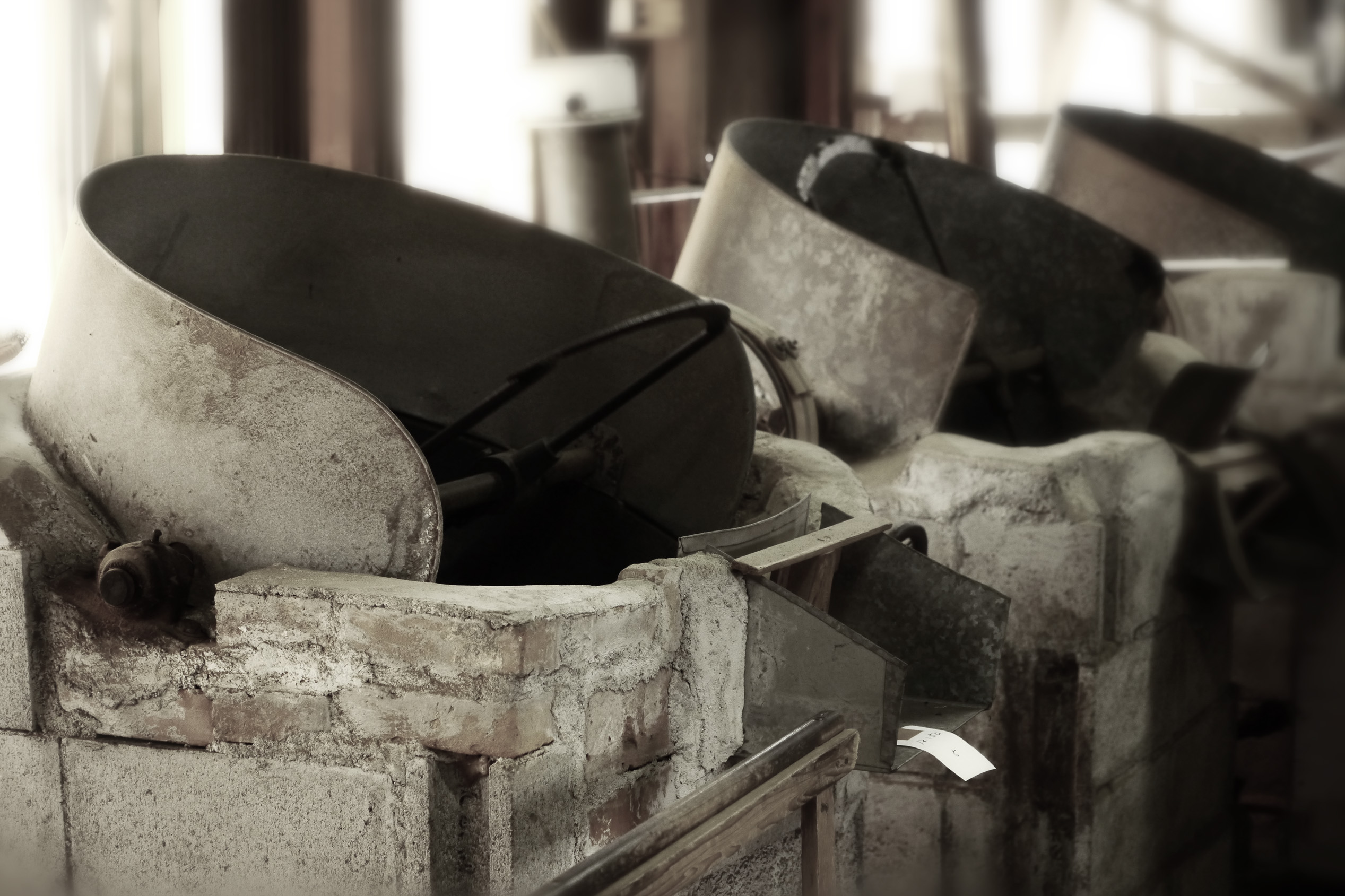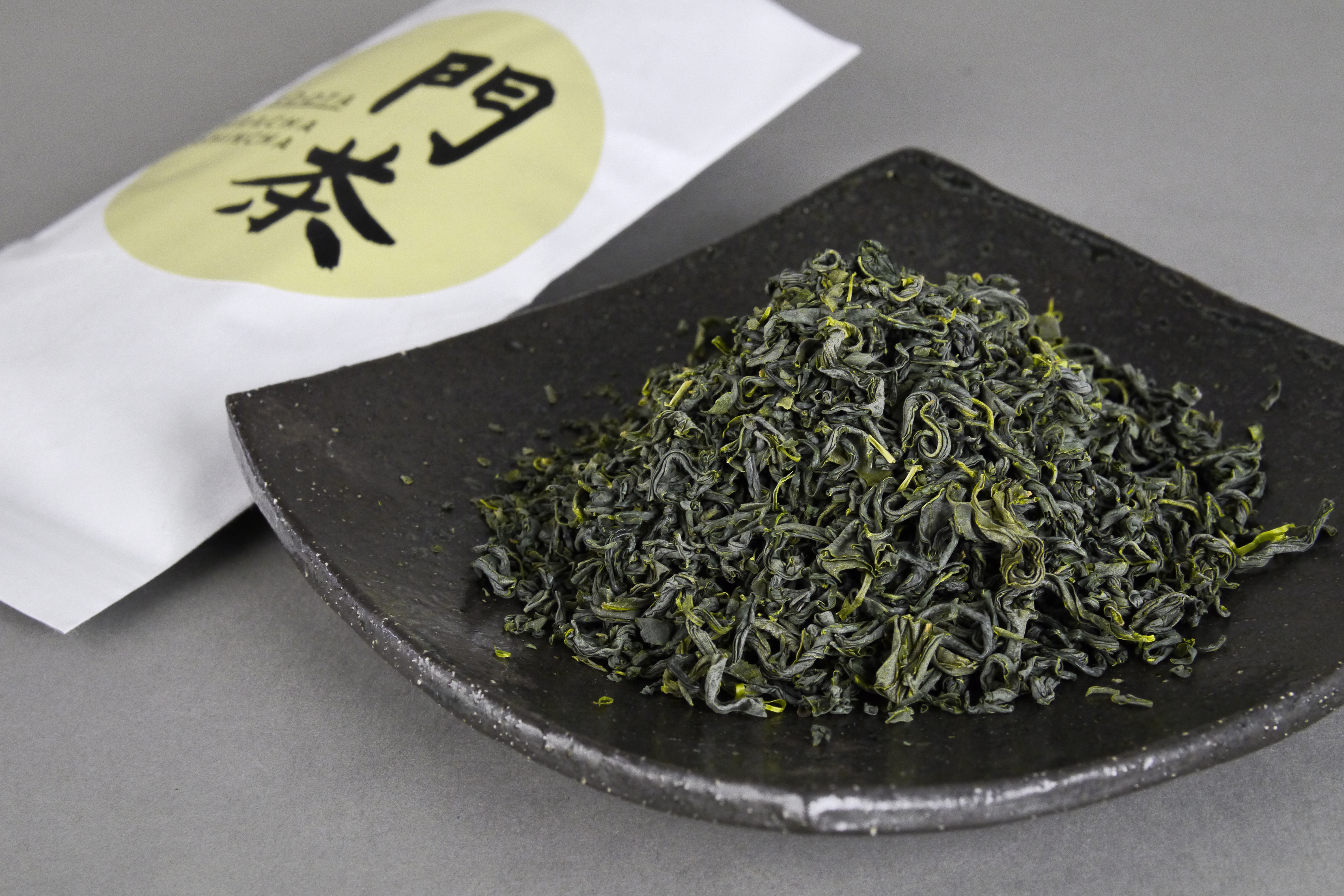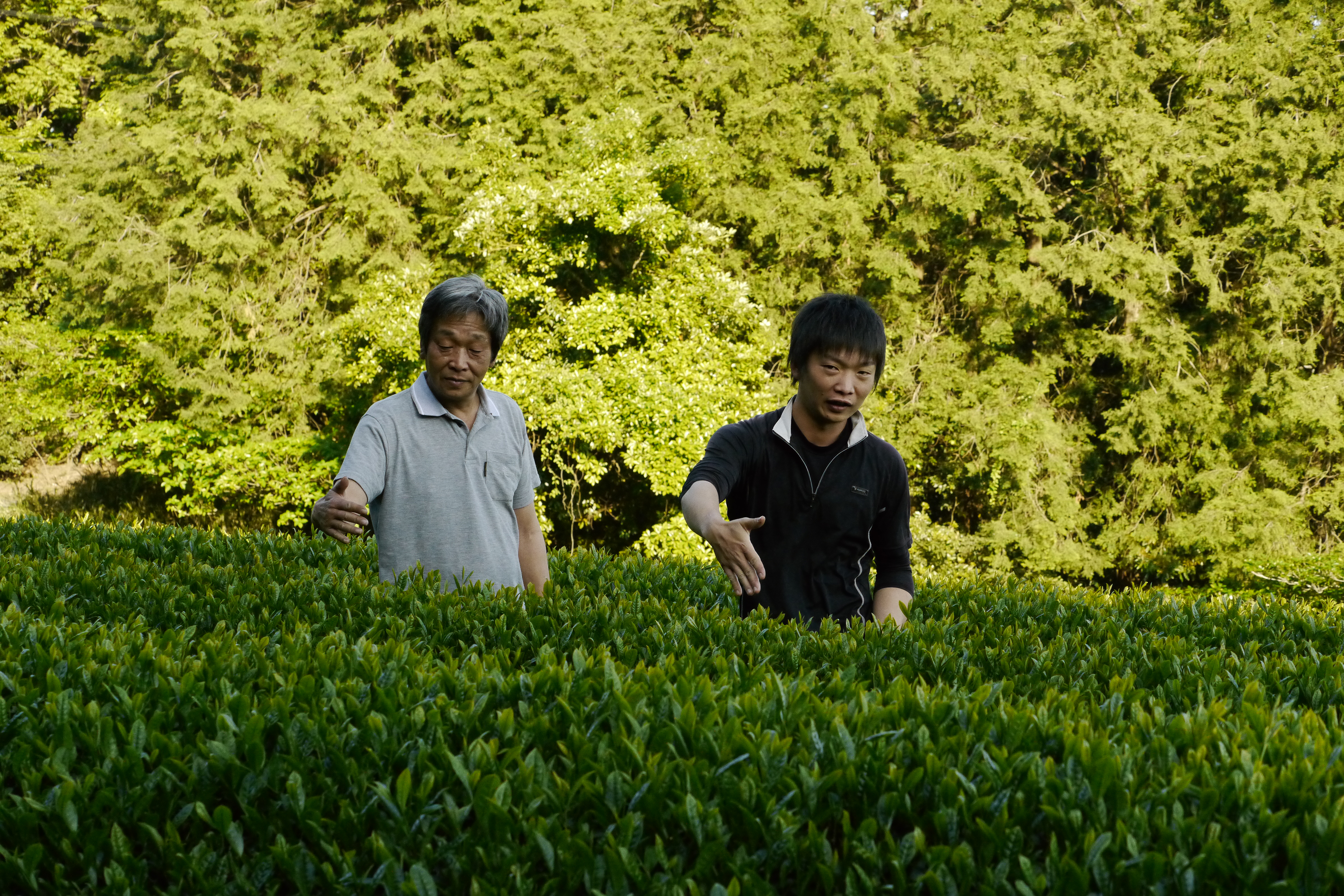For days, we have been full of anticipation, and we especially changed the day of visiting father and son Kadota one day, so that we can be there exactly on the first day of harvest and production in 2018. When we arrive in the small Kadota family garden, not far away from the Morimoto tea garden, a paradisiac, flowery-sweet scent welcomes us.

Today, it is green leaves of the tea bush variety Yabukita, which are first heated, rolled, and then dried in various steps in a well-tempered heat progression. With only 2,6 hectare the Kadota tea garden is one of the smallest ones. Junji Kadota and his son Yusuke Kadota took over the direction of this traditional firm some years ago. Until then, Junji’s father was in charge. Yet, with age there came the time when he was not longer able to fulfill his duties in the tea garden and tea production. Then, Junji and Yusuke both quit their jobs simultaneuosly, to concentrate completely on the production of the and the continuation of the family garden. Of course, they had always been helping in harvest season, so both had many years of experience in the tea production.

Also from the point of view of father and son Kadota, the way of tea production which is performed here, is a precious treasure – one which is now unique in Japan. The cast iron apparatuses used here are already between 50 and 100 years old. All processes are reduced to their essence. There are no conveyors, which transport the tea from one drying drum to the next. All is done by hand. With all their senses, the Kadotas examine structure, smell, humidity, and elasticity of the leaves, and decide how long the single steps of drying are to be done. When they decide that the tea leaves have reached the desired stadium, they take out the leaves from the respective cast iron Kama and fill them to the next apparatus. Son and father are absolutely concentrated during work; they are calm and at peace. One understands: they both know exactly what they are doing. They are one with the tea that they are producing.

Highlight of the processing, of course, are the 100-years-old Hon-Gama (“Real Kama”), three of which once belonged to Shigeru Morimoto’s father Ryotaro Morimoto. When he quit making Kamairi and shifted to making Sencha, he gave the old Hon-Gama to the Kadota family, which is still using them nowadays. Ryotaro Morimoto and also Junji’s father still fired the old Hon-Gama with wood. However, smoke and gathering the right firewood continued being problematic, so today Junji and Yusuke Kadota use gas flames to heat all their Hon-Gama. Indeed, this is the only thing they changed in the old manufactory.
When asked how long the tea stays in the Hon-Gama, Junji answers that he knows from the smell when the tea is ready. It changes from a rather flowery to a sweet fragrance. When they fill in the tea, we can briefly take a smell at the still humid leaves. Two hours later, we come back to the same Hon-Gama and can clearly notice the change as well. The whole room is filled with a scent – not the flowery scent of the beginning of today’s production but a fine sweet one. We wish we could stay in this room for ever.
In a small side room, Yusuke is preparing the freshly produced Aracha Shincha from today for us. The same fine sweet fragrance is arising from the Kyusu. In dry state, the leaves are still silvery-blueish; in the Kyusu they unfold soon and shine in a bright, fresh green. We also clearly perceive the flowery-fresh nuance from the beginning of the production. Together, this results in a combination of a refreshing taste, which stays in the mouth for a long while, with a long, flowery aftertaste lingering. We are so impressed that we take a small amount as this year’s surprise Shincha to Europe:
Kadota Aracha Shincha.

Kadota tea bushes and locations
The Yabukita which was harvested today for the Kadota Aracha Shincha, is the earliest sprouting variety in the Kadotas’ traditional tea garden. The other varieties Kanaya Midori, Yamaminami and Zairai begin to sprout later. They decided to grow these varieties in their tea garden, on one hand because – except Yabukita – they are all traditional Kamairicha varieties. On the other hand, Kadota & Kadota have to cultivate late sprouting varieties in their tea garden, because they could not set up fans as a protection from late night frosts in their parcels. This way, the tea bushes start growing their sprouts in spring, after most of the frost has passed already. Today’s Yabukita comes from the location Odateyama, around 250m above sea level.

Although it is comparatively cold up here, the tea garden parcel is surrounded by trees and thus well-protected. The Kadota family has been cultivating this parcel for several generations already.
Really modern Kamairicha factories do not exist, but in the few still-existing Kamairicha firms – apart from the first heating which is done with dry-heating instruments called “Kama” – different machines are in use, which were originally developed for the Sencha production. Instead of Hon-Gama cast iron apparatuses – as they are still used in the Kadotas’ place – much more efficient Suikan machines are being used. One Suikan machine replaces about three open Hon-Gama. However, the taste of a tea produced with Suikan machines is not the same. Junji explains us that the oxygen exchange during the last drying step to Aracha (around 5% remaining humidity) brings out the scent of the tea very well. When using a closed Suikan-drum, this kind of oxygen exchange does not take place. That means, using the historical apparatuses is essential for bringing out the unique aroma of the Kadota teas.